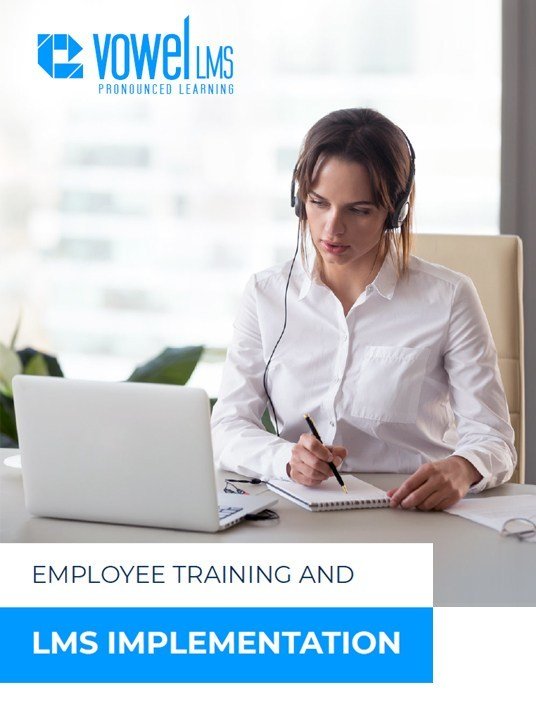A Checklist For Migrating To A New LMS
Since you’re reading this, you’ve been using an LMS for some time now, and have identified some challenges that you wish a new LMS can address. Before you make the switch, there are some things that you should consider, so that the switch comes across as an improvement.

However, switching an LMS isn't easy when you think about the time invested in learning the new system and getting all your users to use it. Then there's also the need to migrate content and users to the new platform and informing your learners of the change.
1. Identify Pain Areas Of The Current LMS
The first step would be to think hard, really hard of the reasons why you are switching the LMS platform. Speak to different types of users—learners, content creators, managers—to ensure all input is captured. Spend some good time to identify the real pain points in the current LMS.
Once you identify why you want to make a switch and define the success criteria, then choosing the new LMS becomes easy since you know what to achieve.
2. Compare And Map Features
Once you decide to take the jump, a good first start would be to identify the areas from the current LMS that you cannot live without. Also, list out lesser-used features that you might be ok to lose. This will help you make a good comparison.
Once you start comparing newer LMSs, don't discard an LMS simply because it does not have a feature. Maybe that LMS has the same feature implemented differently or there is a good workaround. For example, an LMS may not allow uploading videos but may integrate with Vimeo PRO so that you can upload the videos on Vimeo and embed them in the LMS.
3. What User Engagement Features Does It Offer?
Every course creator feels great when users use the content and engage with the LMS. However, let's face it, one of the key challenges of today is a time-crunched workforce who have little time to spend on training. So it is important that the LMS can engage users with features like email courses, daily quizzes, and short learning snippets.
This ensures that learning content is periodically pushed to learners, and they don't need to open the app or visit the website.
4. Newer Content Types
Since you are switching the LMS, now is a good time to explore content types that your LMS may not have had. Since content creation is time-consuming and expensive, several LMSs have a way to use existing content like videos from YouTube and blog posts. Another interesting content type is LTI. LTI allows external content to be accessed by users of the LMS. The score and sometimes the time spent on the external content can be captured in the LMS. H5P.com is an amazing platform where you can create rich and interactive content that can be embedded in an LMS via LTI. Interactive videos, collages, memory games are just some of the types of content that can be created. A few more content types are flashcards that can be pushed to users every day.
5. Migrating Content And Users
This is a very crucial area for the transition, one that could make or break the switch. You would typically be migrating your content, users, and enrollments to the new platform. You might also want the users' progress and reports to be ported over, however, usually, this can be skipped after downloading exhaustive reports from the existing LMS. Depending on the type of export and import tools available in the existing and new LMS, migrating the content can be anywhere between fully automatic to fully manual.
The new LMS provider will usually assist with this step since they will know their system well and use the right process to import the data. However, make sure you are very clear on what to expect in the migration since often there are gotchas like some user attributes that cannot be imported or some course attributes not being supported in the new LMS. Be prepared to migrate a couple of times over to be sure that the final migration is smooth.
6. Timeline For The Switchover
Unless you have very few users and content, the switchover to the new LMS will not be a quick affair. So it is important to carefully chalk out the transition process and set expectations of all stakeholders about the impending change. Plan out the transition step by step.
7. Cost
The total cost of ownership for an LMS goes beyond the licensing and infrastructure costs. There is a lot of effort spent on handholding users, managing content and pulling out reports. Choose an LMS that makes all these activities more efficient than your current LMS.
8. Technology Upgrade?
If you've had the current LMS for long, and especially if it's not a SaaS offering, then there is a chance the underlying technology may not have been upgraded. A lot of new technologies like AI and chatbots are being used to make learning better. It will be a good opportunity to see at this point if the new LMS makes use of these tools.
9. Not Getting Into A Feature Frenzy
When looking at new LMSs, it is easy to get lost with the host of features each has to offer. Remember that the 80-20 rule applies here as well; only 20% of the LMS features will be used by 80% of your users. So just identify which features comprise this 20 % for you, and find the LMS that does these really well.
Download the eBook The Complete LMS Implementation Guide To Ensure Employee Training Success to discover more about the successful implementation of an LMS for achieving better effects in your organization. Join the webinar to delve into the secrets behind a victorious LMS implementation.










